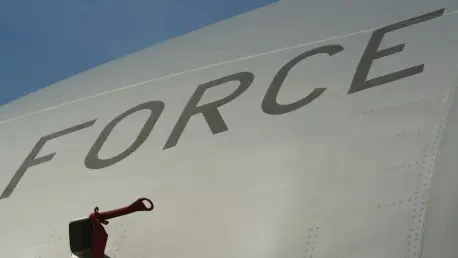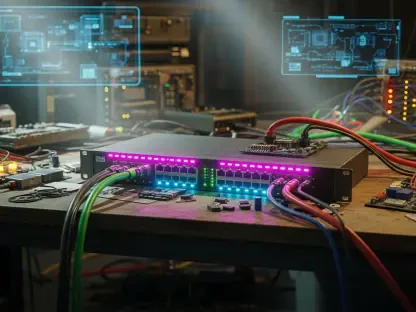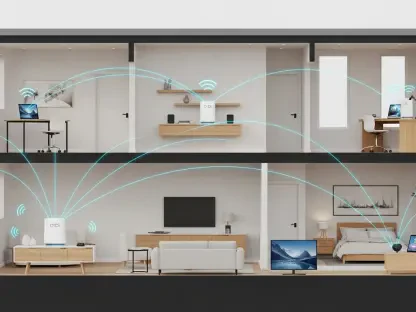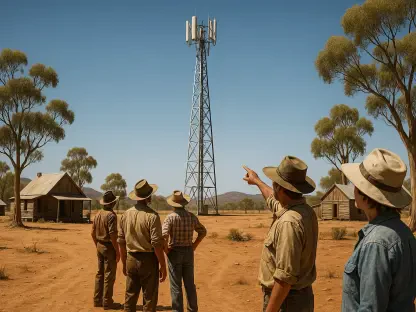The debate within the U.S. Space Force over investing in satellite refueling technology touches upon key issues of military utility, cost-effectiveness, and strategic foresight. As commercial space companies push for the adoption of in-orbit servicing, the question remains whether this initiative can surpass simply replacing satellites that have exhausted their fuel. Military officials express their skepticism about the immediate benefits, considering that most satellites fail due to technical issues rather than running out of fuel. The implications span strategic, logistical, and financial dimensions, underscoring a complex decision-making process that must weigh current defense priorities against the futuristic potential of satellite refueling.
Military Skepticism and Strategic Concerns
High-ranking officials in the U.S. Space Force, such as Lt. Gen. Shawn Bratton, question the direct military benefits of satellite refueling, contrasting it with the well-established practice of air-to-air refueling for aircraft. The latter significantly extends range and mission capabilities for aerial units, but such advantages are less clear when it comes to satellites. The military’s stand is grounded in the need for definitive evidence demonstrating military value before committing to the establishment of a satellite refueling infrastructure. This cautious approach reflects concerns about prematurely investing in a capability that might not yield the expected strategic return, as echoed by Gen. Chance Saltzman’s previous assessments on the matter.
The hesitation is further amplified by the uncertainty surrounding the tangible benefits satellite refueling could offer. Most satellites face end-of-life scenarios due to technical malfunctions rather than depleting their fuel reserves, a fact that tempers enthusiasm within military circles. However, there is a subset of satellites, specifically those dedicated to space domain awareness, that require frequent repositioning and, therefore, consume more fuel. These scenarios present a potential niche where refueling might prove beneficial, sparking a nuanced debate within the military on whether such capabilities could complement existing strategic frameworks without disproportionately straining defense budgets or overshadowing more immediate tactical needs.
Logistics, Costs, and Prioritization
The logistical and financial burdens associated with establishing regular satellite refueling capabilities weigh heavily on considerations of practicality and prioritization, introducing significant challenges to government budgets. A well-functioning refueling system could necessitate large-scale investment in infrastructure, potentially diverting resources from more immediate and pressing defense solutions. This consideration underscores why the Space Force may prefer to prioritize funds for systems that address strategic needs squarely, like enhancing space domain awareness, which involves continuous satellite movements. Given the considerable complexity and cost of in-space servicing, military officials must carefully evaluate the practicality of refueling initiatives in the context of existing defense budgets and resource allocations.
Moreover, the military’s approach is grounded in fiscal prudence, as satellite refueling could inadvertently compromise financial availability for other critical projects. The fact that the majority of satellites retire due to technical issues shifts focus toward ensuring that resources are effectively utilized to maintain and enhance only those satellite operations that present an undisputed and immediate strategic benefit. Thus, the prioritization of resource allocation becomes a key factor, with the military adopting a judicious stance that ensures any investment in satellite refueling will genuinely address operational gaps without diverting attention from other essential defense developments.
Commercial Sector Advocacy
Despite the military’s hesitance, the commercial space sector is actively advocating for in-space servicing, aiming to extend the lifespan of valuable satellite assets while also reducing orbital debris. Companies such as Northrop Grumman, alongside innovative startups supported by venture capital, are at the forefront of promoting the dual civilian and military advantages offered by satellite refueling. By highlighting the potential to transform the commercial satellite market and create new avenues for satellite maintenance in orbit, these companies strive to build a robust business for such services. However, developing this commercial viability hinges on garnering stronger support from governmental bodies like the Space Force.
The lack of concrete endorsement from military entities presents a significant challenge for the commercial space sector. The impetus to push forward with in-orbit servicing initiatives is driven by the desire to not only extend the life of critical space infrastructure but also to leverage the economic potential that comes with servicing capabilities. Yet, this vision remains partially hindered by the absence of strong governmental backing, which would enhance confidence in and bolster the market for these emerging services. Until government entities fully integrate satellite refueling into their operational paradigms, the commercial sector may continue to encounter obstacles in establishing a clear and compelling business rationale that could drive further investment and innovation in this burgeoning field.
Navigating Military-Commercial Relations
The interaction between military and commercial sectors is characterized by a cautious dance of expectation and hesitation, where each waits for the other to take actionable strides. The military’s demand for quantitative proof of strategic advantage, particularly in scenarios that could involve conflicts with global adversaries, poses a difficult expectation for commercial players to satisfy without collaborative endeavors. Officials like Bratton emphasize that any investment in satellite refueling infrastructure should aim to bolster the U.S.’s military prowess, thereby urging a focus on empirical data over theoretical projections until technological progress can validate the promises of satellite refueling.
This expectation necessitates that all parties involved steer through complex geopolitical landscapes, ensuring that technological advancements align with national security interests. Both the U.S. Space Force and commercial sector must collaborate to explore viable pathways that leverage technology to create shared value without compromising sovereignty or strategic strength. By engaging in open dialogues and experimental initiatives, both sectors can work toward bridging gaps in understanding, developing shared economic and strategic goals, and ultimately, ensuring that the implementation of satellite refueling springs from a shared vision that enhances collective capabilities in space.
Exploring Future Prospects
Within the U.S. Space Force, there’s a significant debate over whether to invest in satellite refueling technology. This issue brings into focus concerns related to military utility, cost-effectiveness, and strategic foresight. As the commercial space sector advocates for adopting in-orbit servicing, there’s an ongoing deliberation about whether this strategy can be more advantageous than merely replacing satellites that run out of fuel. Military officials are skeptical about the immediate advantages because most satellite failures stem from technical problems rather than fuel exhaustion. This decision has strategic, logistical, and financial implications, highlighting a complicated process. It requires careful consideration of current defense priorities while also contemplating the potential future benefits of satellite refueling. In assessing all these factors, decision-makers are challenged to balance investing in existing capabilities with preparing for advancements that could reshape the landscape of space operations and military readiness in the years to come.









